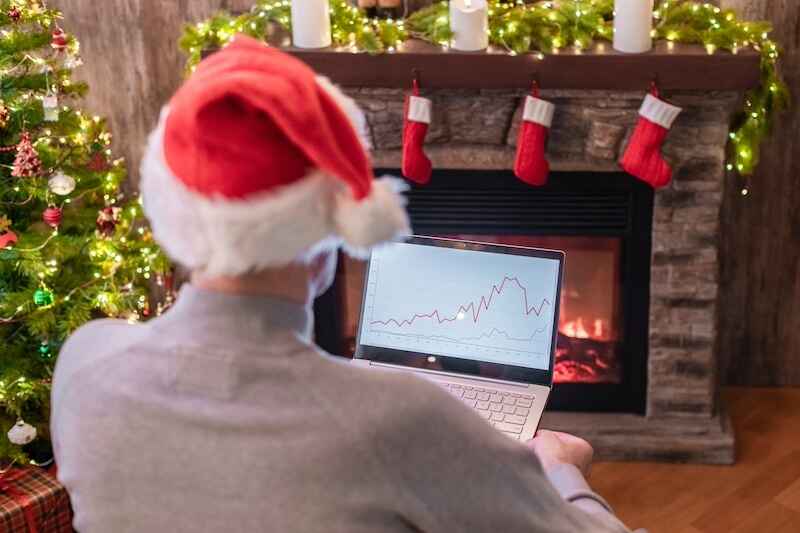Editor’s Note: After analyzing 38,500 chart patterns, researchers were stunned.
One pattern predicted market moves with 84% accuracy.
But in our extensive testing, we’ve found stocks where it’s been 100% accurate.
Like Dave Inc’s 718% surge in 5 months.
And Wang & Lee’s 390% explosion in 9 weeks.
Right now, 30 new stocks are showing this pattern.
Click here to see which stocks could soar next.
– Nicole Labra, Senior Managing Editor
Every year I look forward to the last few days of December… it’s a very special time.
For Christmas?
Nope.
For the so-called “Santa Claus rally.”
This is a relatively reliable phenomenon in which the market delivers a short, sharp rally over the last five trading days of December (and the first two of January), as measured by the S&P 500. According to the Stock Trader’s Almanac, this rally has been good for an average 1.3% gain from 1950 through 2022.
This year, that rally – if it happens – would begin on Tuesday, December 24, and last through Friday, January 3.
While Santa doesn’t always show – the S&P 500 suffered substantial drops of 3% and 2.3% around Christmas in 2014 and 2015, respectively, and the market was down slightly last year over those seven days – in some years, the rally is quite dramatic.
The S&P rallied 1.4% at the end of 2021 – and Santa visited Wall Street with tidings of joy every year from Christmas 2016 through 2022.
Interestingly, there’s even more to the Santa Claus rally phenomenon. Using data that dates back to 1969, the Almanac found that for years when there is no end-of-year rally, a bear market tends to follow.
“If Santa Claus should fail to call, bears may come to Broad and Wall” goes the adage (the New York Stock Exchange – or NYSE – is on the corner of Broad and Wall Streets).
The extreme case of this occurred in late 1999 and into 2000 during the dot-com internet bubble. That’s when the market fell 4% in the seven days surrounding the New Year’s holiday.
The market then dropped again a few months later in March, and the ensuing bear market lasted until October 2002 – the S&P 500 then fell by 49%.
Let’s hope that’s not the case this time. So cross your fingers that Old St. Nick makes an appearance this holiday season.
Harvest Your Losses
However, there is another, less-known year-end trend some investors may want to take advantage of.
It’s the result of something called tax-loss harvesting.
At the end of each calendar year, many investors sell some of their losing stocks and use the tax deduction to offset the capital gains taxes on their winners for the year.
And if your losses exceed your gains, you can offset up to $3,000 of other income taxes. There’s much more about that on this IRS page.
You can certainly use tax-loss harvesting to offset other taxes and leave the IRS out in the cold (that’s one of The Oxford Club’s Four Pillars of Wealth).
But there’s a way to trade this trend also.
Because so many investors engage in tax-loss harvesting, some stocks that are down for the year get hammered at year end. In fact, they get pushed down – temporarily – to new lows that don’t reflect their true values.
Many of those beaten-down stocks then rally in the new year as investors get back into them.
From 1974 to 2021, NYSE-traded stocks that set new lows in mid-December went on to outperform the broader market – averaging gains of 11.3% versus the market’s 3.1% gain – in the first six weeks of the new year.
My advice? If you see what appear to be quality stocks hitting lows in the next three weeks, it may be worth snatching them up for a six-week rally at the beginning of the new year.
Bottom line: Even if a Santa Claus rally doesn’t show this year, the stock bargain bin could bring some holiday cheer.
Credit: Source link














